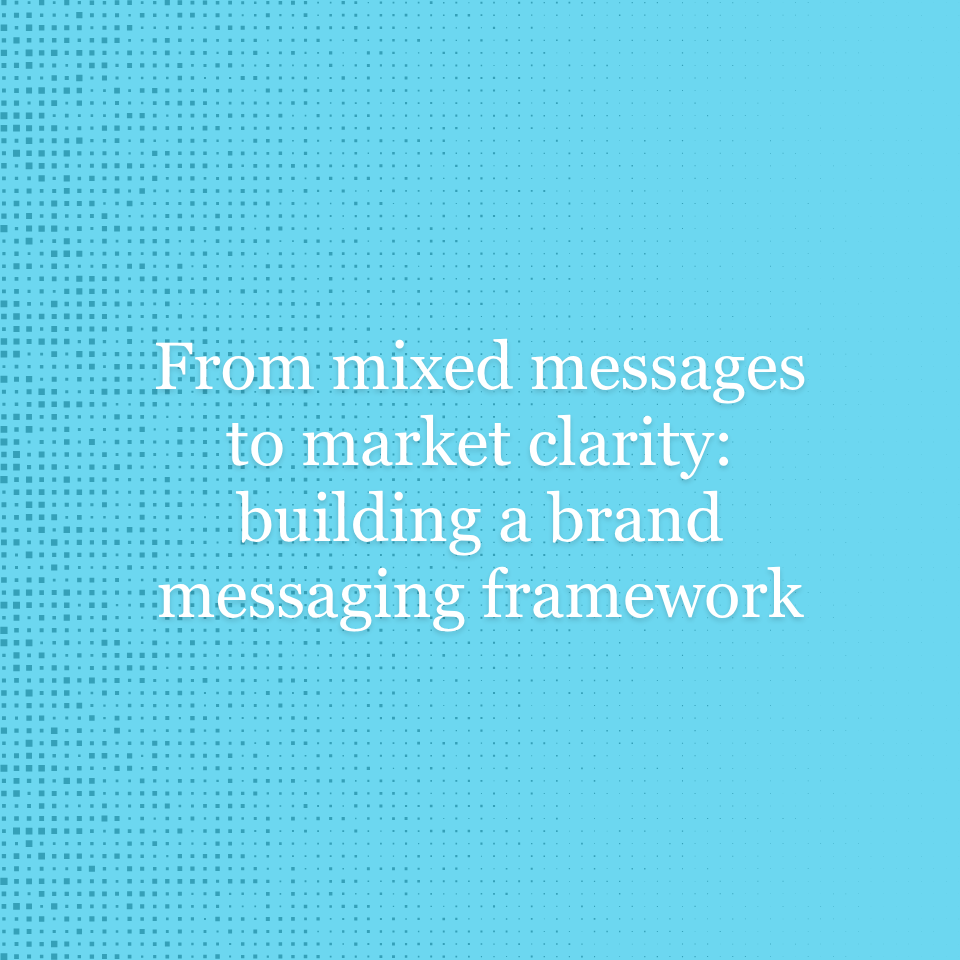In the race to build, scale, and stand out, most companies get laser-focused on what they do. Total addressable market (TAM)? Nailed. Product roadmap? Sorted. Messaging architecture? In development.
But there’s one asset that consistently gets overlooked, and when it’s ignored, it quietly erodes a company’s growth potential from the inside out:
Emotional connection.
We’re not talking about emotional design here (though design certainly plays a role). We’re talking about something deeper, something foundational: The emotional alignment that lives at the heart of your brand, connecting your company’s reason for being with the emotional outcomes your customers crave.
When that alignment is missing, companies waste millions trying to market a message that doesn’t resonate. But when it’s present, it becomes a multiplier.
Here’s why emotional connection might be the most valuable brand asset you haven’t fully invested in yet, and what to do about it.
The Missing Link Between Business Strategy and Brand Expression
You know the language of growth: TAM. Segmentation. Positioning. Brand targets. These are the inputs of business strategy. On the other end of the spectrum, you have creative expression: your visual identity, messaging, storytelling.
But the bridge between the two, the emotional core of your brand, is often neglected. And that gap costs companies dearly.
A founder might know why they started the company. A product team might know why their solution matters. But if that emotional “so what” isn’t clearly defined, shared, and felt across the brand? The story won’t land. The message won’t stick. And the brand won’t grow.
Why Emotional Alignment is a Growth Unlock
Emotional connection is a strategic imperative for brands. Here’s why:
- It makes people care. Logic informs, but emotion moves. A brand that connects with identity, belonging, or meaning creates motivation.
- It builds trust. When people feel seen, they’re more likely to engage, stick around, and advocate for your brand.
- It differentiates. Your product can be copied. The way you make people feel? That’s much harder to replicate.
- It drives action. Purchases, loyalty, and belief shifts are all rooted in feeling something first.
- It fuels memory. Neuroscience backs this up: emotion encodes memory. If you want people to remember your message (and buy later), they need to feel something now.
Emotion is what turns your brand from a line item into a long-term asset.
Start with the Founders: Aligning from the Inside Out
If your company is founder-led (or even founder-influenced), this work starts at the top.
Josh Felser of Climactic put it simply:
"If you don't shine a light on the emotional side, it's going to come out anyway... you have to move through it, whatever [emotion] is making decisions harder... the last thing we want is for our founders to make decisions out of fear."
The founders we’ve worked with who build enduring, magnetic brands are the ones who lead with emotional clarity. They know what they’re building and why it matters to them personally. That clarity creates alignment across leadership, culture, customer experience, and storytelling.
Without it? You risk decisions made from fear, marketing that falls flat, and a brand that looks good on paper but can’t move people to act.
So… What’s Your Brand’s “So What?”
Most companies can articulate what they do. Fewer can explain why it matters emotionally. That’s where differentiation and scale live.
Here’s a simple starting point:
- Define your functional truth. What problem do you solve? What product do you sell? Be literal here.
- Uncover the emotional outcome. What changes for your customer, emotionally, because your product exists? (Think: confidence, freedom, empowerment — not just efficiency or savings).
- Build your brand around that emotional core. From your name to your visuals to your messaging, everything should echo that deeper “why.”
Case in Point: From Functional Fix to Emotional Driver
Let’s take a real example.
A company making tech-powered adjustable beds came to us. The functional truth? Their beds help aging adults avoid falls and stay safe at home. But the emotional core? That was about independence — being able to age confidently, without fear or dependence.
We renamed them Dawn House, and built a brand rooted in vitality, confidence, and vibrant aging.
The result? A brand that didn’t just describe what it sold; it stood for something. And customers noticed.
Start With Emotion
Emotional connection isn’t fluff. It’s focus. It’s alignment. And it’s one of the most under-leveraged growth levers in modern brand strategy.
When you take the time to define the emotional thread that runs through your leadership, your company, and your customer experience, you build a brand that scales with meaning, not just momentum.
So before you rewrite your homepage or launch your next campaign, ask yourself:
Have we done the emotional work?
If not, that’s where to begin.





